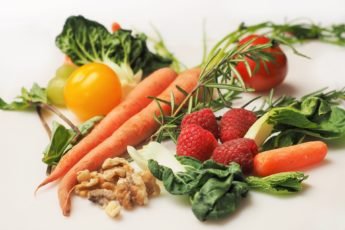Most of us can’t imagine living without our shampoos and conditioners. But what many people might not consider is that these products are a relatively new invention only taking the place of soap in the 1990s. And now in the 2000s there are thousands of shampoo brands promising the glossiest most fragrant and cooperative locks you could ask for. The question is though, how safe are they?
The fact is some of the ingredients that make your shampoo foam nicely and remove oil effectively has been found to be quite harmful. The ingredients in almost all detergents can irritate the skin, causing eczema and dry, coarse, or reddened skin, particularly in high concentrations or when used often. They strip the hair of its natural oils prompting its sebaceous oil glands to release extra sebum when they sense the hair drying out. Thus the vicious cycle of shampooing and conditioning commences.
The culprit in 90% of brands is Sodium Lauryl Sulfate. It has been proven to disrupt the natural oils that maintain the skin’s integrity. As a result, it is routinely used as a standard skin irritant in patch testing. It has been blamed for more serious conditions though. One common claim is that SLS can damage the eyes, possibly leading to blindness. Another is that SLS is linked to cancer.
Health experts and organisations might argue that the amount of SLS or SLES which is the milder cleanser used in baby products, is so minimal that it does no harm, especially if rinsed off properly. What others might argue is that there is a direct link between the increase of cancer cases and the growing number of products containing harsh chemicals in the home.
Modern families don’t realise just how many particles and fumes they are consuming on a daily basis. People use hair and skin products, aerosols, cleaning products, and cosmetics like they’re going out of fashion. And in the industrial world SLS is used for engine degreasing, garage floor cleaning, in car wash soaps and the like. The manufacturers of SLS, in their material safety data sheets, issue strict guidelines for the safe handling of the material. These include wearing a self-contained breathing apparatus, heavy rubber gloves, and safety goggles! The guidelines say to avoid inhalation and not to get it in the eyes or skin as it is irritating to mucous membranes and the upper respiratory tract.
Studies show SLS corrodes hair follicles and impairs their ability to grow hair. One study showed that if you use SLS on your scalp it could make your hair fall out!
More alarming than that is evidence suggesting that SLS is rapidly taken up by eye tissue and retained. Its uptake is greater in young children. Again SLS is absorbed through skin contact, not just through the eyes. Our eyes develop most during the first few years of our lives.
SLS is in a lot of other personal care products as well, including toothpaste, hand and body soaps, facial cleansers, and shaving gel. In a bubble bath it can cause urinary tract infections. Another concern is it has a tendency to react with other ingredients forming a potent cancer-causing agent.
The skin is a living and breathing organ of your body. To demonstrate just how much can pass through it, if you spend just 17 minutes in a bubbly bath, analysis of your urine would reveal traces of all the ingredients of that bubble bath product.
Health Canada, the European Union and the U.S. Food and Drug Administration (FDA) consider SLS and SLES to be safe ingredients. So does The Cosmetic Ingredient Review, an independent U.S. organization that assesses the safety of ingredients in cosmetics.
That said the US Food and Drug Administration has insisted that the following warning appears on some tubes of toothpaste there. “Do not swallow …. In case of accidental ingestion, seek professional assistance or contact a poison control centre immediately.” Well, the fastest way to absorb things is under the tongue where it can take as little as 30 seconds. Is it not possible that some toothpaste might get under your tongue for that length of time while brushing? In fact, children have died from swallowing too much toothpaste.
The good news is there are many natural and much less pricey things to wash your hair with. Those who have gone “No Poo” wash their hair with gentle alternatives like Baking-Soda, Apple-Cider-Vinegar, or even just Water-Only. It’s certainly something to think about.
The thing to remember is that the makers of personal care products are making billions of pounds a year so the more often we use their products the richer they get. Just like the tobacco industry was able to do for decades, the makers produce scientific data of their own to cast doubt on findings that suggest our health is being compromised by lining their pockets.
So to safeguard your family take a step back and take a long hard look at your home; research alternatives and make informed choices because no one cares about the health of you and your family more than YOU.







